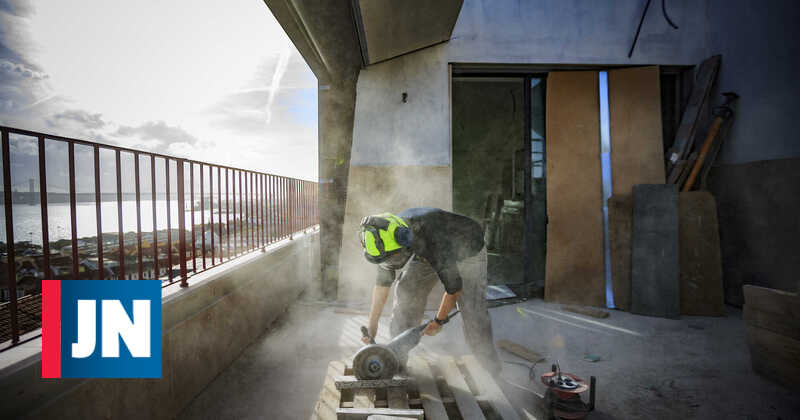Construction companies have faced an increase in raw material prices since the start of the year, exceeding 35% in some cases, a situation that could lead to an increase in business costs, and thus home costs. The demand for materials is high, but there is a shortage of supply, which causes an inflationary effect.
There is a shortage of wood for carpentry, steel for building structures, and PVC and aluminum for pipes and windows. The problem has a global dimension. In Portugal, construction companies are already admitting that if these increases continue, the difference will not be tolerated.
The trend is up
According to Reyes Campos, president of the Association for Industrial Construction and Public Works (AICCOPN), reference prices for concrete rods, a staple material for buildings, have already recorded changes on average of more than 35% due to the strong escalation in the international markets for raw materials. He asserts that steel, aluminum and copper “have reached historic records.” The price of a ton of copper in London has increased this month by 30% compared to the beginning of the year.
GesConsult’s Director General of Works, Nuno Garcia, confirmed that since January, there has been a “gradual increase in the prices of some raw materials, which has been highlighted from March onwards, specifically in wood, steel and PVC, as a result of the intense movement. They are calling for the entire industry. “
According to the director, companies are facing “an increase in prices ranging between 30% and 50%, with a tendency to increase in the coming months.” Nuno Garcia stresses that business deadlines can be put at risk due to delays in delivery and extremely overstated final costs.
The activity did not stop
The construction sector was one of the few sectors that remained active in this epidemic. As Nuno Garcia recalls, “Cement consumption increased by 10.6% in 2020, an unknown percentage since 2011.” In the first quarter of the year, it recorded an increase of 10.8% compared to its peer.
He notes that at the start of the health crisis, industries halted production due to the possibility of a sudden drop in demand, inventory was depleted, and when it was necessary to replenish it, manufacturers were not operating at the normal speed.
Nono Garcia acknowledges that, in the medium term, material prices will suffer a downward adjustment, “but not to the values we had in January of this year.” And he remembers that European recovery and resilience plans may exacerbate the situation, because they provide support for housing construction, “which will be more expensive”.
José de Matos, general secretary of the Portuguese Association of Building Material Traders, argues that a “product shortage” has not yet appeared on the market, but “expectations are that this situation will happen in the coming months”. With Covid, many companies closed or reduced their activities in some markets, which contributed to “the scarcity of certain components, which caused production delays.”
At a good pace
The latest APCMC survey, related to the first quarter of 2021, showed that 92.5% of companies (agents and retailers) consider the level of activity good or satisfactory compared to the last three months of 2020.
high demand
Cement consumption in Portugal hit a 10-year monthly high in March, up 10.8% in the first three months, according to AICCOPN.

“Wannabe internet buff. Future teen idol. Hardcore zombie guru. Gamer. Avid creator. Entrepreneur. Bacon ninja.”

